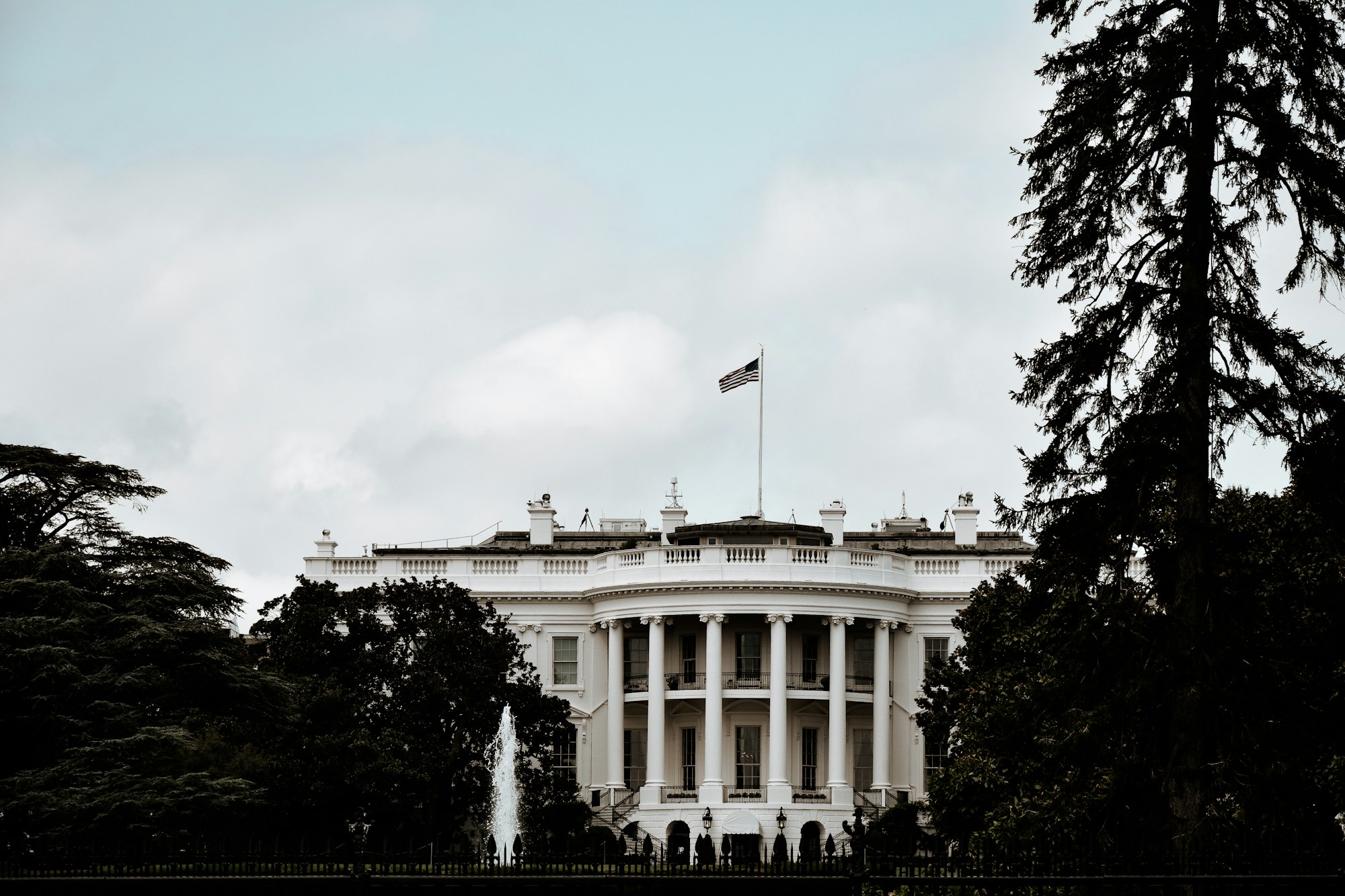Breaking Down the Executive Order on the Safe, Secure, and Trustworthy Development and Use of Artificial Intelligence

Introduction
The Executive Order on the Safe, Secure, and Trustworthy Development and Use of Artificial Intelligence (EO) was issued by the White House on October 30, 2023, establishing a comprehensive framework for the development and governance of artificial intelligence (AI) in the United States. It highlights AI's potential for promise and peril, stressing the importance of responsible AI use for addressing urgent challenges and promoting prosperity and innovation.
The Purpose of the EO
The EO establishes a pivotal framework for cultivating and managing artificial intelligence (AI) technologies within the United States. Its purpose is twofold: to advance the United States' position as a global leader in AI innovation and to ensure that AI development is aligned with the ethical, legal, and social norms that underpin American society. The EO lays the groundwork for leveraging AI to bolster economic growth, enhance national security, and improve its citizens' overall quality of life.
The Role of AI in the World Today
In today's technologically driven era, AI is no longer confined to the realms of science fiction; it has emerged as a driving force in generating economic value, reshaping how individuals interact, and transforming industries. AI systems facilitate complex decision-making, enable automation, and deliver insights through vast data analysis. The omnipresence of AI, from smartphones to smart cities, underscores its central role in contemporary society.
The Importance of the Safe, Secure, and Trustworthy Development and Use of AI
As AI systems become more sophisticated, ensuring their safe, secure, and trustworthy deployment is paramount. The development of AI must prioritize robust security measures to safeguard against cyber threats, incorporate ethical guidelines to prevent misuse, and be underpinned by a foundation of trust to earn public acceptance. Such practices are crucial to harnessing AI's full potential without sacrificing societal values and individual rights.
Sector-Specific Actions
Health and Social Services
The EO's sector-specific health and social services directives aim to harness AI for better disease prediction, treatment personalization, and service delivery. Health initiatives seek to reduce costs, enhance patient outcomes, and support public health strategies. Special attention is given to AI's role in combatting biological threats and managing disease outbreaks, while ethical concerns, such as data privacy and algorithmic bias, are flagged for resolution.
Transportation
AI's transformative effect on transportation includes optimizing traffic flow, enhancing supply chain logistics, and piloting autonomous vehicles. These initiatives aim to diminish accidents, reduce emissions, and improve the overall efficiency of transit networks. The EO acknowledges potential complications, such as job displacement and safety standards for autonomous technologies, emphasizing the need for policies that mitigate these issues.
Education
AI's application in education focuses on adaptive learning platforms, administrative automation, and broadening access to personalized education. The EO supports technologies that tailor educational experiences to individual learning styles and optimize institutional workflows. Recognizing data privacy issues and quality disparities, it outlines measures to address the ethical use of AI in educational settings.
Acceleration of AI Innovation in the United States
Government Use and Regulation of AI
The EO prescribes principles for the government's AI use, aiming to improve federal agencies' efficiency, transparency, and accountability. It also calls for clear regulatory paths that safeguard fairness and do not hinder innovation. The EO acknowledges the delicate balance of encouraging AI’s benefits in governance while preventing potential misuse or breaches of trust.
Public Sector Use of AI
The directive encourages responsible AI implementation by federal contractors and grant recipients. It aims to ensure that the deployment of AI in federal projects aligns with the principles established in the EO. Initiatives to standardize approaches to AI by these external entities reflect the government's commitment to a collaborative, responsible AI ecosystem.
Promoting Public Trust in AI
Public trust is recognized as a cornerstone for AI's integration into society. The EO emphasizes stakeholder engagement and transparency as mechanisms for building trust. Disclosing AI practices, ensuring clear communication about AI systems, and incorporating public feedback are undertaken to promote an AI landscape that is democratic and inclusive.
Ensuring the United States Leads in AI
Federal Investment in AI
The EO highlights the strategic necessity of federal investment in AI research and development to assert U.S. leadership in the AI arena. It supports funding for cutting-edge AI technologies and addresses funding allocation and priority-setting barriers. The focus on sustained investment underscores the EO's commitment to attaching national pride to AI proficiency.
Policy and Regulation
Developing informed, adaptive policies and regulations is crucial to navigating AI's rapid evolution. The EO endorses policy-making that fosters innovation while protecting public interests. It recognizes the dynamic challenges in regulating AI and focuses on creating regulatory frameworks that enable rather than stifle technological growth.
Research and Development Priorities
AI research and development are positioned as national priorities within the EO. Promoting coordination across federal agencies and the private sector ensures that R&D efforts are innovative and aligned with the nation's needs and values. The EO contemplates addressing the roadblocks in translating R&D into tangible AI advances and societal benefits.
Protecting Civil Liberties and American Values in AI
Privacy Protections in AI
The EO expressly acknowledges the criticality of privacy in the AI context, mandating the development and application of privacy-preserving technologies. It recognizes the risks AI poses to personal data and advises on frameworks to mitigate these concerns while supporting the beneficial use of AI in varied sectors.
Fairness and Non-Discrimination in AI
Upholding fairness and preventing discrimination in AI systems are vital to ensure that AI equitably serves the broader community. The EO lays out directives for developing unbiased AI, identifying the social implications of automated decision-making, and rectifying discriminatory practices embedded in these systems.
Transparency in AI
The EO supports transparency as a vital principle for AI oversight and governance. It reinforces the need for understandable AI decision-making, promoting informed public discourse on AI's ethical and legal implications. This transparency is necessary for maintaining accountability in how AI affects people's lives.
Issues with the Protection of Civil Liberties and American Values in AI
While the EO is forward-looking in safeguarding civil liberties, it is also pre-emptive in recognizing that new challenges to American values may emerge as AI technology evolves. It proposes continual adaptation of measures to ensure that the nation's foundational values remain at the forefront of AI advancements.
International Engagement on AI
International Policy and Norms
Given AI's global reach, the EO stresses the importance of shaping international policy and norms. The United States aims to foster a global environment where AI operates under shared principles of trustworthiness and interoperability.
AI Standards
Standardization in AI is paramount for ensuring quality and trust across international borders. The EO advocates for U.S. engagement in formulating global standards embodying American ingenuity and ethics. The goal is to achieve widespread adoption of measures that address technical and ethical aspects of AI.
Partnership for Global AI
The EO calls for cultivating robust partnerships across countries to address global challenges through AI. It acknowledges the complexity of building international coalitions but emphasizes the importance of shared goals in promoting responsible AI development and use.
Conclusion
The Significance of the EO
The overarching role of the EO is to ensure that AI development is synergistic with American values and societal goals. Its strategic intent is to establish the U.S. as a beacon of innovation, grounded in ethical governance and international leadership.
Concerns About the EO
While the EO's ambitions are clear, its success is contingent on the intricacies of implementation. Concerns regarding regulatory overreach, stifling innovation, or underestimating the complexities of AI governance are potential pitfalls that need careful navigation.
Overall Assessment of the EO
The EO encapsulates a holistic vision for AI in the United States, balancing the enthusiasm for AI's possibilities with a sober understanding of the responsibilities it entails. The initiative aspires to ensure AI contributes to the common good while not losing sight of the individual.
What Comes Next from the EO?
The issuance of the EO is merely a first step. What follows is the operationalization of its mandates through policy development, inter-agency collaboration, and engagement with stakeholders. The outcome will reflect the nation's capacity to evolve in tandem with AI innovation while steadfastly upholding democratic values and societal well-being.

